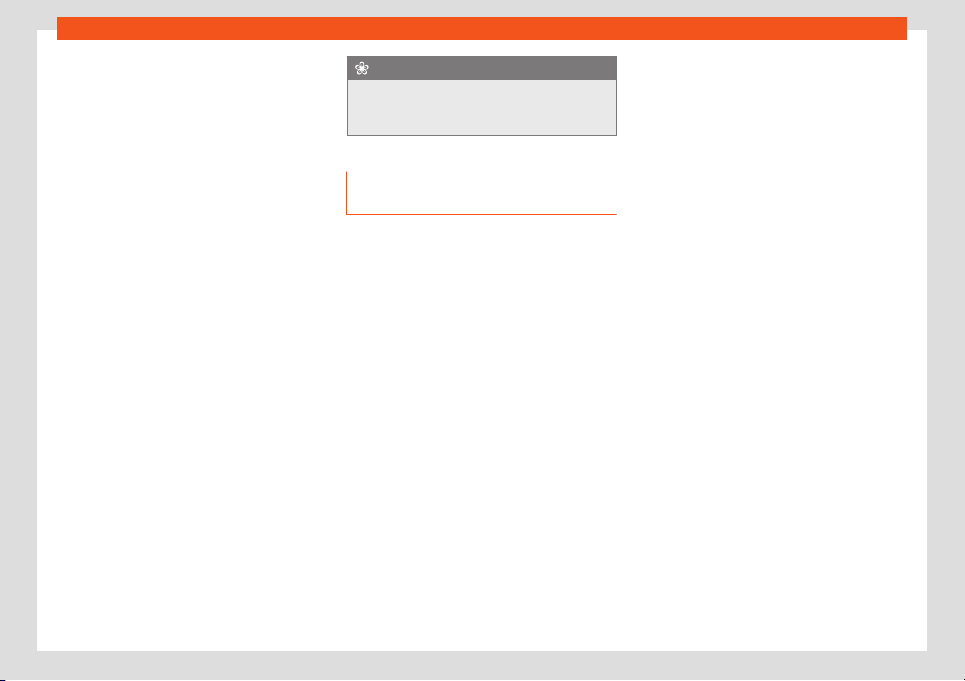Loading ...
Loading ...
Loading ...

Driving
internal friction in the engine is greater than
l
at
er on when all the moving parts have bed-
ded down.
How the vehicle is driven for the first 1500 km
(1000 miles) influences the future engine per-
formance. Throughout the life of the vehicle, it
should be driven at a moderate speed (espe-
cially when the engine is cold) this will reduce
engine wear and increase its useful life. Never
drive at extremely low engine speeds. Always
engage a lower gear when the engine works
“irregularly”. For the first 1000 km or
600 miles, please note:
●
Do not use full throttle.
●
Do not force the engine above two thirds of
its maximum speed.
●
Do not tow a trailer.
Between 1000 and 1500 kilometres (600
to 1000 miles), gradually increase power
until reaching the maximum speed and high
engine speeds.
Running in new tyres and brake pads
●
Replacement of wheel rims and new tyres
›››
page 340.
●
Information about brakes
›››
page 269.
For the sake of the environment
If the engine is run in gently, the life of the
engine will be increased and the engine oil
consumption r
educed.
Economical and environmentally
friendly driving
Fuel consumption, environmental pollution
and wear t
o the engine, brakes and tyres all
depend largely on driving style. Consumption
can be reduced between 10-15% with an effi-
cient driving type. The following section gives
you some tips on lessening the impact on the
environment and reducing your operating
costs at the same time.
Active cylinder management (ACT®)*
Depending on vehicle equipment, the active
cylinder management (ACT®) may deacti-
vate some of the engine cylinders if the driv-
ing situation does not require too much pow-
er. The number of active cylinders can be
seen on the instrument panel display.
›››
page 70.
Foresight when driving
If you think ahead when driving, you will need
to brake less and thus accelerate less. Take
advantage of the inertia of the vehicle when-
ever possible, with a gear engaged. This
takes advantage of the engine braking effect,
reducing w
ear on the brakes and tyres. Emis-
sions and fuel consumption will drop to zero.
Changing gear to save energy
An effective way of saving is to change in ad-
vance to a higher gear.
Manual transmission: shift up from first to
second gear as soon as possible. Choosing
the right gear enables fuel savings. Select the
highest possible gear appropriate for the
driving situation (the engine should continue
functioning with cyclical regularity).
Automatic transmission: accelerate gradu-
ally and without reaching the “kick-down”
position.
Avoid driving at high speed
Avoid travelling at your vehicle’s top speed,
whenever possible. Fuel consumption, emis-
sion of harmful gases and noise pollution
multiply as speed is increased. Driving at
moderate speeds will help to save fuel.
Reduce idling time
In vehicles with the Start-Stop system idling is
automatically reduced. In vehicles without
the Start-Stop system it is worth switching off
the engine, for example, at level crossings
and at traffic lights that remain red for long
periods of time. When an engine has reached
operating temperature, and depending on
234
Loading ...
Loading ...
Loading ...